|
The Rubik's Cube, invented in 1974 by Hungarian sculptor and professor of architecture Ernő Rubik, is a puzzle with over 43 quintillion possible combinations. Yes, 43 quintillion! 43,000,000,000,000,000,000! For many, a puzzle with that many possibilities seems practically impossible to solve, but for decades, people have been improving the uses of the Rubik's Cube from just an experiment of the creator, to a logical puzzle game, to a sporting event that features incredible people known as “speed cubers.” Learning to solve the cube offers many benefits, including improved memory and problem-solving skills, the ability to map through the experience in learning algorithms, and improved reflexes from training to solve the cube at faster speeds. The cube also provides intangible benefits like discipline, perseverance, and self-confidence. And, of course, it makes for a hell of a conversation starter.
The benefits of learning the cube have been felt first hand by the team behind Cube Up Solution, a group of young, Black software developers and avid cubers who wanted to introduce more minority children to the wonder world of cubing. The team behind Cube Up Solutions believes that it is their duty to promote cubing in minority communities and help develop problem solving and technical skills of children, teenagers, and adults who may otherwise not appreciate the wonders of cubing.
The team behind Cube Up Solutions believe that the social and political landscape of the United States, especially for the Black community, is shifting and a change of focus and leadership is necessary. We believe leadership needs to shift focus from obtaining political power to acquiring more intellectual and economic power.
We hope to contribute to developing our future leaders of tomorrow by helping develop their problem solving and technical skills. We look at cubing, coding, robotics, genetics as fields that young children should be focusing on now so as they move into their future careers they have a foundation to help further the cause of creating equality of opportunity for all. We look at the Rubik’s cube as a perfect springboard to introduce kids to the skills they will need to survive and thrive in the world of tomorrow.
If you are interested in having your child learn the Rubik’s Cube, or if you want more information about Cube Up Solutions and what they can offer your community, please request more information via email at cubeup.org@gmail.com or through Instagram under the handle @cubeupsolutions.
~~ Article and images provided by Cube Up! Solutions ~~
0 Comments
By Simon Tang
The ensuing conflict between parents and teachers over the response of the school systems across the nation, and in Loudoun County, make evident one fact: both facilitators of our education are part of the bigger problem.
In a way, the teachers and the parents are really one in the same. To contextualize this, consider two powerful politicians: Donald Trump and Alexandria Ocasio-Cortez. In short, both are politicians who influence and conduct policy in 280 characters or less, both are polarizing figures within their respective political parties, both appeal to a specific base in their political party as opposed to the entire party at large. Donald Trump and Alexandria Ocasio-Cortez are basically the same people a few generations apart and on opposite sides of the political spectrum. Why does that matter in a discussion about education and school reopenings?
Because teachers and parents are essentially fulfilling the same roles in a different conflict: while parents are calling for in-person schooling for their children, the Loudoun Education Association (LEA) and its members have called for 100% distance learning. Both, however, ignore larger problems just as Donald Trump and Alexandria Ocasio-Cortez do in the political sphere.
Where is student input in any of the positions that parents and teachers have taken? Parents are concerned about their children’s education, but what about the kids themselves? Where do they find themselves in trying to answer this challenging question? And what about the concerns for teachers’ children? This negligence works both ways. In a statement released on Monday, July 6, the LEA said, "As the voice of employees, LEA conducted an all staff survey and provided the results to LCPS Administration and the School Board in early June. Unfortunately, vital employee input was not incorporated into the development of LCPS’ presented plans." "As the voice of employees... Unfortunately, vital employee input..." It sounds like LEA’s concern for students is minimal. While the educators’ concerns are important, if "academic growth, physical safety, and emotional well-being of our students" is most important, doesn't it make sense to consider the students’ own concerns? What is incredulous is that neither parents nor educators seem to understand the fact that their conflict does not help students, but neither did their “partnership” in pre-coronavirus times. Both parties subverted students' autonomy and their ability to become learners together. Now they are just doing it apart. In the background of racial injustice, the killing of George Floyd, the shooting of Breonna Taylor, the sexual assault of Vanessa Guillen, it is important for us, as a society, to come together to ask and answer the questions surrounding racial violence. These events are not isolated; they are part of a larger problem in this country. In the same way, the challenges we face in education – of helping students become the agents of their own education, of addressing racial inequity within schools, of services for students who need special accommodations – are not isolated problems. They are part of a larger failure. Now, I am challenging you to realize that today’s social and political ills are connected with flaws in our education from yesterday. The problem is a lot bigger than a simple comparison of Donald Trump and Alexandria Ocasio-Cortez or the names of those fallen in the cause for social justice. In a political climate such as this, is it not important that the next generation receives the highest quality education? The students of today will be the policymakers of tomorrow; serious changes to our political system and status quo must start with how we educate students. Educators and parents playing the role of politicians in our homes and in our schools does little to empower students; they are the same as politicians focused on reelection in the fall. Just as politicians are seemingly interested in challenging the racial status-quo in this country, educators and parents are seemingly interested in the welfare of students. But how much is self-serving, posturing, and virtue signaling? For this – our education system – to work, students must be the driving force of their own education. Students must be empowered to think and act of their own free will. What we have now are options – and no solutions – just as in the real world where there are options but no clear solutions to our social ills. I realize that this writing does not provide an in-depth answer about the question of race in the United States, nor about the many questions about schools, but my conclusion is this: the only solution to the social and educational problems we face today is to convert students to life-long learners, and it starts with changing the minds of parents and educators in our homes and our learning environments. They must recognize that students should be included in the solutions, not ruled over and compelled. Wayne Gretzky once said, “You miss 100% of the shots you don't take.” The only solution now is to take a shot. By Jonathan Walthour Jonathan Walthour is a 2018 graduate of George Mason University and 2014 graduate of Heritage High School. He is a business systems analyst who enjoys spending time with friends, trading on foreign exchange markets, and has been getting more involved in the Black Lives Matter movement. Jonathan wrote this short essay and shared the videos (scroll down) to help others get a more personal, less media-centered view of the BLM protests in Washington DC. The date was June 2, 2020, and the time was around 5:00pm. A few friends and I got out of the car on Vermont Avenue and walked toward Pennsylvania Avenue, The White House. We eagerly moved toward the energized protesters. I noticed a family of five (father, mother, and four young children) with cleaning supplies trying to scrub profane anti-Trump graffiti off a nearby wall. No one said anything as we walked by, but I thought to myself: “Why bring little children to this type of atmosphere where there’s going to be a riot?” As we continued to walk, the roaring chants grow louder, and the electric atmosphere rose as well. I did not know whether to feel scared or excited; little did I know what I was about to see. As we finally turned the corner on Pennsylvania Avenue and merged into the crowd, I could not believe my eyes – Thousands upon thousands of peaceful protesters chanting the names of those brutally slain by police. There were people handing out snacks, water, sanitizer, posters, gloves, masks, eye drops – you name it; it was most likely there. The most shocking revelation was the number of demonstrators who were NOT African American marching alongside us. As a black man, it gave me hope to see people were advocating for a problem that was not necessarily “theirs” but who realized the OVERALL problem and made it theirs. By no means will anything change overnight. But day by day, more and more people become educated and aware, whether they agree to advocate for BLM (Black Lives Matter) or not. A change is going to come… in due time. We, as Americans, have the right to speak up, and we must make our voices heard. We MUST stop the brutality of law enforcement. Not all protests are riots, and not all cops are bad. But there is one common enemy: racists. We need political change and change to policing policies; cops must be held accountable when they commit a crime. The date is now June 12, and Breonna Taylor’s murderers are STILL free and getting paid…Yeah, something is not right. If you do not know the story, today’s a great day to do some reading. And if you really wish to make a difference, keep in mind it is your civic duty to vote and let your voice be heard. Reposting on social media can raise awareness and funds, but voting and expressing your own morals have even more impact.
By Ryan Tibbens
Short Form:
I was recently shocked and amazed and horrified by certain responses to a popular tweet that read “Serious question... What is one non-salary related incentive your district could offer you to boost teacher morale? Superintendents, listen up.” Around 20% of the early responses focused on wearing jeans to work. Are you fucking kidding me? Administrators: Quit bitching about teachers wearing jeans. And quit charging money to wear jeans – that’s not even a sensible fundraiser. That’s it. Just shut up and deal with real problems. Teachers: Quit bitching like your pants are your most severe professional problem. If jeans are actually among your biggest concerns, then one of these statements is true: 1) You work in a nearly perfect school, are compensated well, have students who are well cared for and prepared, and have full community support (i.e. You’re delusional); or 2) You are too damn stupid to identify real problems and prioritize them, and, as a result, you should not be teaching. That’s it.
The Great Teacher Jeans Debate.
Some of you just rolled your eyes: “Not again.” Others had a very different response: “What debate? They’re just jeans…” Interestingly, both responses are appropriate. A tweet by @ModestTeacher helped bring this “problem” to my attention. Modest Teacher writes, “Serious question... What is one non-salary related incentive your district could offer you to boost teacher morale? Superintendents, listen up.” Through a bit of luck and selective memory, I was generally unaware that teachers’ legwear is such a contentious issue. I quickly scrolled through the hundreds of comments/replies to his tweet and counted no fewer than 20 comments about jeans, possibly more. Reducing class sizes, giving teachers unencumbered planning time, and increased autonomy are the only topics that appear to have received more support, and their counts are only marginally higher than jeans. Somehow, this is a big deal, but it shouldn’t be. Let me explain. In some school divisions, the school board, superintendent, or building administrators have made rules against teachers wearing jeans to work. In some places, the policy is sacrosanct. I recently saw this post in a private principal/administrator group on Facebook: “Sadly, I just have had a staff diagnosed with cancer. Staff wants to raise funds. Original though was pay to wear jeans, but jeans are a no. Other ideas?” That principal went on to clarify that it is a district-wide policy; the rule is absolute with no exceptions or adjustments.
I student-taught at a high school that had a strict faculty dress code: men must wear button-down shirts with ties, dress “slacks,” no visible tattoos, no facial hair. At all. I had a friend who worked in a neighboring school and had to wear long sleeves, athletic compression sleeves, or gauze bandages to cover a beautiful tattoo on her forearm – as though making a 6th grade teacher look like a recent suicide survivor was less concerning than body art. As a student teacher, I had no choice in my placement, so I objected to the facial hair rule, and once they made that exception, I took the liberty of wearing a polo shirt on Fridays (and sometimes Mondays). The principal was quite serious too. After student-teaching there in the early spring, I was hired as a long-term substitute at the end of the year. The principal called me into his office to discuss the dress code (I kept using my modified version), general “professionalism,” and a picture of me holding a plastic disposable cup on my MySpace page (STFU, I’m old). After making passive aggressive assaults on my shirt, beard, and social media presence, he offered me a full-time job beginning the following fall. He saw no humor or irony. Since the quality of my work warranted a job offer, despite my “unprofessional” appearance, I took the additional liberty of wearing jeans on my final two Fridays at that school.
At my first full-time teaching position, the principal was relatively strict about pants as well. During my tenure there, at least two teachers were stricken with cancer and one birthed a child with severe disabilities. In response, the school community rallied together and supported each person in need – through paid “Jeans Days.” The concept was simple – Pay $5 (or maybe it was $3 at first), and wear jeans to work, with all funds going to the faculty members in need. I never really objected to helping those people, but the idea that my pants somehow affected my work was patently ridiculous. I made a habit of wearing jeans on “Jeans Day” without putting my money in the collective jar (I occasionally paid; other times, I slipped a few bucks directly into those teachers’ mailboxes. Sometimes I didn’t pay at all). I have no problem helping coworkers in need. What I have a problem with is the idea that I should pay to wear a pair of cotton pants textured differently than my normal cotton pants because one texture is somehow better for education.
Let’s be clear – pants CAN matter, but usually they don’t. In arguing that the “Jeans Debate” is stupid, I’m not arguing that we should entirely disregard pants. Assless chaps, thong bikinis, Daisy Dukes, or stinking, dirty, unwashed pants can present actual impediments to learning. But how are blue cotton jeans substantively different from tan cotton khakis? Sometimes people say, “Dress for the job you want, not the job you have.” That’s how you can spot the future administrator-wannabes early – too many suits, too many pleats. For me, dressing for the job I want would mean sweatpants or mesh gym shorts or loose, comfortable khaki shorts – the job I want is “retired.” But the analog to that is dressing for the job I have. The job I have is educating high school students, a job I can perform better when the students find me both professional and relatable. Things 16-year-olds don’t find unprofessional? Jeans. Things 16-year-olds don’t find relatable? Pleats.
As we push for more and more motion in the classroom, more “active” learning, more kinesthetics, it seems reasonable for teachers to be comfortable enough to move. This is one more reason that PE teachers are the smartest people in any high school – they receive the same pay and benefits but do a small fraction of the planning, grading, and remediation of core content teachers AND they get to wear warm-up pants and shorts all the time. If a PE teacher can wear comfortable pants because they dress appropriate for their tasks, then I ask you: shouldn’t an English teacher wear whatever kind of wild Bohemian, beatnik writer bullshit he wants? Or maybe he’s thinking about reading… so he should wear pajamas. Right?
If you are a public school administrator who feels that jeans must either be banned or paid for, I have bad news for you – you’re an idiot or asshole. Maybe both. You probably have several thousand things that are more important, more pressing, in your building (namely, students). I started out by saying that I’ve had the good luck to forget all about the jeans controversy, and that is because I’ve spent nearly ten years working in a great school that prioritizes students and education. Our administrators focus on things that matter, and while professionalism certainly matters, wearing iconic American pants is not interpreted as a problem. If you are a public school teacher who feels that wearing jeans is among your top professional needs or priorities, I have bad news for you – you’re an idiot or asshole. Maybe both. You probably lack the big-picture awareness necessary to accurately identify your students’ needs, your own professional needs, or the needs of your school system. You probably lack the intelligence and critical thinking necessary to teach students well. You also probably lack the attention span and reading skills to have made it this far down the page. EVERYONE – FOCUS ON THINGS THAT MATTER. Jeans don’t matter. (And yes, I’m fully aware of the irony of writing something like this about something that doesn’t matter.)
By Ryan Tibbens
(Order information available at the bottom.)
The novel, which follows a white tweenager and black man as they run away from abuse and oppression down the Mississippi River, is not only anti-slavery, but anti-racist as well, an uncommon position in the 1880s. Many modern Americans fail to realize that even most abolitionists held intensely racist beliefs. However, Mark Twain was not among them. After being asked about black students entering prestigious universities in 1885, Twain had this to say: "I do not believe I would very cheerfully help a white student who would ask a benevolence of a stranger, but I do not feel so about the other color. We have ground the manhood out of them, & the shame is ours, not theirs; & we should pay for it." Twain went on to pay the full tuition and costs at Yale Law School for Warner T. McGuinn, one of the first black students at the school and later a lawyer praised by Supreme Court Justice Thurgood Marshall and others. The point here is that the novel is not a promotion of slavery or racism; instead, it is biting satire of all the worst parts of American culture (in Twain's eyes) -- racism, slavery, abusive parents, alcoholism, blind nationalism, religious revival movements, bawdy entertainment, con men, and stupid, ignorant, gullible, and mean people of all kinds. Unfortunately, people have always misunderstood the book. After its initial publication, it was criticized as "indecent" and "shameful" because of its humor, its use of a child narrator, its use of dialect, and even its anti-racist message. By the second half of the 20th century, people began to object to the book's inclusion of the dreaded "n-word." However, even that criticism was not always genuine or fair. Many people who objected to the book's message of racial equality and inclusion used the racial slur as an excuse to remove the novel from schools. More recently, people offer sincere objections to the book's racial slurs. One professor, Dr. Alan Gribben, recently revised and republished The Adventures of Huckleberry Finn through a company called NewSouth Publishing; in his text, he replaces every instance of the word "nigger" with the word "slave." Gribben claims to have made the change to reduce teachers' and students' discomfort with the text and class discussions; however, it renders the book colorblind. Gribben's edits put modern readers' focus on slavery, which had been illegal for nearly two decades when Twain published the novel, rather than race, which is the real core of the book. Consider that Twain writes and publishes this book in 1884 but sets it in the 1830s or 1840s. Why? Because a story with a race-related moral would be better understood by his audience if put in the context of slavery. When we replace racial terms with slavery terms, we confuse the issues. We forget that the vast majority of slaves in world history have not been black and that the vast majority of black people who have ever lived have not been slaves. Surely Twain opposed slavery, but the slavery issue was mostly settled at the time of publication. This is a book about (and against) racism. People's objections to Twain's use of the n-word are fine on the surface, except that the book is among the most anti-racist books of its era, perhaps any era; the language is more symptomatic of time period and realism than intent. That is not to say that readers' concerns, objections, and feelings aren't legitimate -- they are. Revered history professor Sterling Stuckey says, "In my judgment, 'Huck Finn' is one of the most devastating attacks on racism ever written.'' As intelligent, culturally-literate Americans, we must deal with a tough question -- should we ever be asked to experience discomfort on our journey to enlightenment?
Enlightenment is at the heart of this great novel. In perhaps the plot's most important moment, young Huck grapples with society's ethics, his own morals, racism, slavery, and his loyalty to his friend Jim, a runaway slave. When faced with a decision between leaving Jim to be re-enslaved far from home, returning him to his 'rightful' owner and be re-enslaved, or defying all his school, church, and social learning by working to free Jim from his new captivity and continue to help him find freedom -- a decision between doing the 'right thing' according to society or the 'right thing' according to his heart -- Huck declares, "All right then, I'll go to hell." Huck may not have achieved true enlightenment just yet, but he makes a choice that he never regrets and that shapes his future acts -- he will always do what is right, regardless of what society says. Mark Twain's The Adventures of Huckleberry Finn is a leading candidate for the title of 'Great American Novel.' It incorporates important elements of our national ethos: rugged individualism, naturalism and realism, complicated history, racism, slavery, coming of age, and -- above all -- the ongoing struggle between personal morals and social ethics. Because of the book's language, fewer and fewer teachers use this book, often deciding that "it just isn't worth the trouble anymore," but growth is rarely easy, progress requires a struggle, and art thrives on challenges. The Adventures of Huckleberry Finn, though not perfect, is special, is purposeful, is thoughtful, is moral, decent, and a must-read for any person desiring better understandings of morality, racism, or American culture. This book deserves an A+ for its literary innovations, cultural significance, and educational offerings.
Support ReadThinkWriteSpeak by using these links for purchase. You pay nothing more, but Amazon sends us a small portion of each sale to support this website and local classroom needs.
ORDER INFO: The first book link above (McDougal Littell Literary Connections) is recommended because it the copy that Mr. Tibbens has and that the school offers. Class discussions and lectures will include book references and page numbers from that edition; it is available for purchase via the link AND for free borrowing from the school book room. The Bantam (2nd above) and Dover (3rd above) editions are of similar cost and quality, though the Bantam version has slightly larger margins for annotating. The Norton (4th above) is a nicer binding and includes analytical and informative support texts, but it does cost a bit more. The 5th book is a reprinting of the original text, including illustrations and other extras from early printings. Any original, unabridged edition of the book is acceptable for class use. Ebooks and audiobooks are widely available (often for free/cheap), but they make annotations extremely difficult, so they are not recommended unless paired with a traditional hard copy. Contact the teacher with questions.
Just for fun...
Introduction and Review by Ryan Tibbens
(Order information available at the bottom of the review.)
Simply put, The Narrative of the Life of Frederick Douglass is one of the most important books written in American history. Widely regarded as the best American slave narrative, it was written by Frederick Douglass at the age of 27, just a few years after gaining his freedom. Like most slave narratives, it includes testimonials and introductions by prominent white abolitionists to lend ethos to the author, but upon reading, modern audiences can scarcely imagine that Douglass needed a boost in credibility. His narrative structure is sound, imagery is vivid, diction is impeccable. His appeals to human decency and justice are cries we can't unhear. An early review in William Lloyd Garrison's newspaper proclaimed, “It will leave a mark upon this age which the busy finger of time will deepen at every touch. It will generate a public sentiment in this nation, in the presence of which our pro-slavery laws and constitutions shall be like chaff in the presence of fire. It contains the spark which will kindle up the smouldering [sic] embers of freedom in a million souls, and light up our whole continent with the flames of liberty."
Frequently cited as an inspiration by civil rights champions and politicians, The Narrative of the Life of Frederick Douglass also functions well in modern English and social studies classrooms. Its historical significance and status as a trusted primary source are impressive, but Douglass's style and advanced, sometimes intimidating, vocabulary provide students opportunities to study rhetoric, syntax, diction, style, and more. Douglass's writings have been cited on the Advanced Placement English Language & Composition exam no fewer than three times and offer an opportunity to become more comfortable with older non-fiction, which is traditionally the most challenging multiple choice reading passage on that exam.
For use in my AP English Language & Composition classes, students focus on (and annotate) the author's rhetoric and style, and they give special attention to content related to education and personal freedom. Douglass's exquisite writing makes the first task easy; his candor eases the second as well. In Chapter VI, Douglass writes that his master once said if he was taught to read, "'there would be no keeping him. It would forever unfit him to be a slave. He would at once become unmanageable, and of no value to his master. As to himself, it could do him no good, but a great deal of harm. It would make him discontented and unhappy.' These words sank deep into my heart, stirred up sentiments within that lay slumbering, and called into existence an entirely new train of thought. It was a new and special revelation, explaining dark and mysterious things, with which my youthful understanding had struggled, but struggled in vain. I now understood what had been to me a most perplexing difficulty—to wit, the white man's power to enslave the black man. It was a grand achievement, and I prized it highly. From that moment, I understood the pathway from slavery to freedom. It was just what I wanted, and I got it at a time when I the least expected it. Whilst I was saddened by the thought of losing the aid of my kind mistress, I was gladdened by the invaluable instruction which, by the merest accident, I had gained from my master. Though conscious of the difficulty of learning without a teacher, I set out with high hope, and a fixed purpose, at whatever cost of trouble, to learn how to read. The very decided manner with which he spoke, and strove to impress his wife with the evil consequences of giving me instruction, served to convince me that he was deeply sensible of the truths he was uttering. It gave me the best assurance that I might rely with the utmost confidence on the results which, he said, would flow from teaching me to read. What he most dreaded, that I most desired. What he most loved, that I most hated. That which to him was a great evil, to be carefully shunned, was to me a great good, to be diligently sought; and the argument which he so warmly urged, against my learning to read, only served to inspire me with a desire and determination to learn. In learning to read, I owe almost as much to the bitter opposition of my master, as to the kindly aid of my mistress. I acknowledge the benefit of both."
The Narrative of the Life of Frederick Douglass is fully deserving of a 5/5 rating. And weighing in at less than 100 pages, even the busiest student can make time to read and annotate it well in just a couple weeks.
For book order purposes, I recommend the Dover Thrift edition because it is accurate, complete, and cheap. The print and margins are somewhat small, so annotations can sometimes be tricky for students who write too much or have large handwriting, but the monetary trade-off usually makes it worthwhile. The other $5-7 versions available on Amazon.com are of varying quality, many having printing errors, binding problems, small margins, or missing prefaces/introductions. Therefore, I personally recommend the cheaper Dover Thrift (which I use) or the Penguin Classic edition, which includes other Douglass writings and speeches. The full text is widely available online, free of charge, but few students have ever submitted quality annotations in an Ebook or from a .pdf. Proceed with caution. Still, it is an option. The book is also available at most major book stores. If you have questions about obtaining a copy, let us know. Related Readings/Materials
ReadThinkWriteSpeak and the ClassCast Podcast are Amazon affiliates. As such, they receive a small portion of any purchases made after clicking links on this page. All proceeds are reinvested into this website, the podcast, or classroom/school supplies for the author/s and students.
|
Read.Think.Write.Speak.Because no one else Archives
December 2021
Categories
All
|


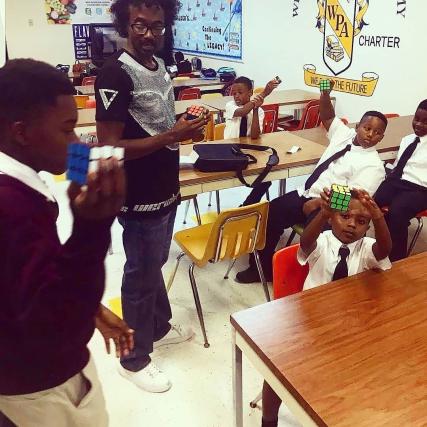



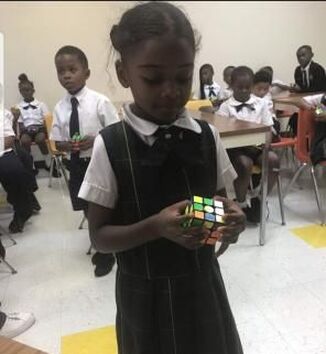

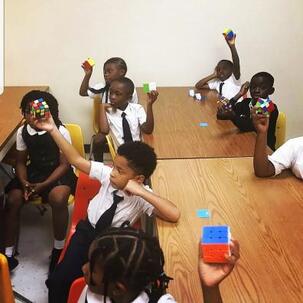
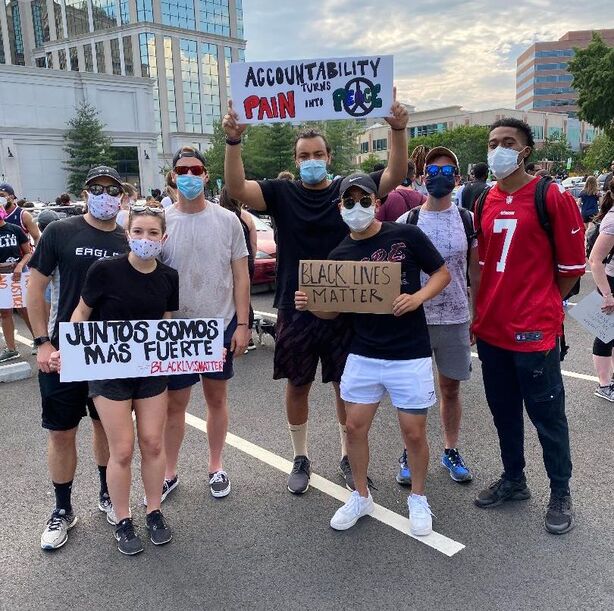

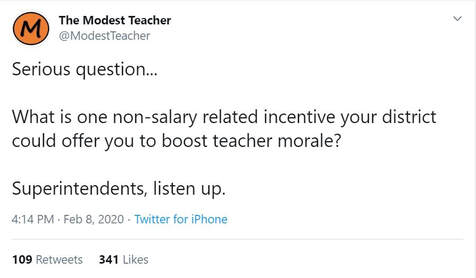
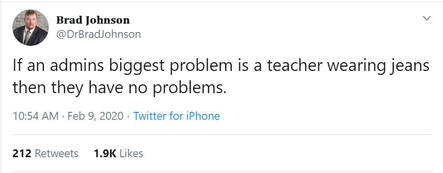
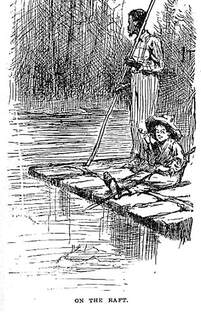





















 RSS Feed
RSS Feed